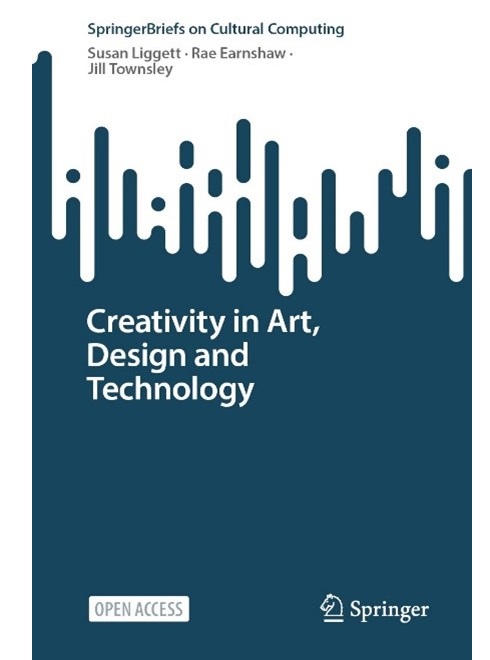The book Creativity in Art, Design and Technology examines how scientific and artistic thinking are seemingly at opposite ends of the spectrum. But, when these disciplines are bridged, the outcome can lead to greater understanding.

Creativity in Art, Design and Technology, by Susan Liggett, Rae Earnshaw and Jill Townsley, takes on the formable task of trying to find the intersection between art, design, and technology. The book is an easy read, no math or complex computer concepts, but full of inspiring and thought-provoking ideas and questions.
The book does an excellent job in explaining how creativity and imagination can benefit design and implementation. It goes on to show why data visualization artists can (should?) provide insights into understanding data. With that view in mind, the European Laboratory for Particle Physics, commonly referred to as CERN, offers artists residencies, commissions, and an events program to build bridges between the two cultures. Between 2019 and 2021, for example, Dutch artist Rosa Menkman was resident at CERN Collide. NASA had a similar program, and in 2003, Laurie Anderson, an American avant-garde artist, composer, and musician, became NASA’s first artist-in-residence, which inspired her performance piece “The End of the Moon,” demonstrating that the bridge can be made.
Human creators are capable of great feats of imagination and inventiveness, points out Earnshaw. History and tradition testify to the masterpieces that have been produced over the centuries. Most of these have been created in human time with the tools that were available. The current digital revolution is providing a new set of tools and environments that creators can use, but this does raise issues such as to how best to preserve traditions and aesthetic values that have been built up over many generations. Technology can provide both continuity and discontinuity, which has both opportunities and challenges. A number of the factors influencing creativity are summarized and suggestions are made for evaluating the outcomes of the creative process.
In Chapters 2 to 5, Liggett points out there are numerous theories of creativity from different academic fields, but an overarching unifying theory is almost impossible. She then goes on to show examples of how they have indeed been overcome.
In Chapters 8 and 9, Townsley shows some fantastic sculptures made with rolls of paper and plastic spoons but largely designed with a computer.
The conclusion is that science and technology may often be perceived as the primary drivers in a material world, resulting in the arts and humanities being forced into a more reactive position. However, when questions are asked about the values of the science, or the meaning that technological developments have uncovered, these disciplines are often at a loss. It may be regarded as “beyond science.” This is where art can make a valuable contribution in being able to connect us with worlds outside science. At the same time, art practice has been forced by these developments to think of knowledge acquisition outside that of art alone. Therefore, all parties can be beneficiaries of collaboration and mutual understanding.
The artwork in the book is delightful, surprising, and even inspiring.
The book is open access, which means that you have free and unlimited access.